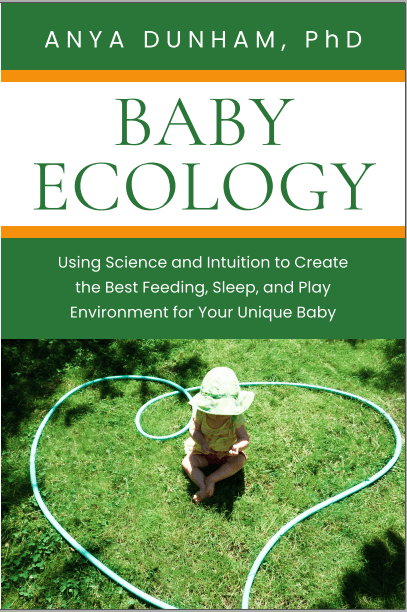Baby Ecology book is here! Learn more
Baby Ecology book is here!
- Home
- Getting Ready Checklist
- Baby items worth researching
- Baby Cry Decoder
Baby cry decoder apps: Are they any good?
by Anya Dunham, PhD
Are AI-powered baby cry decoder apps helpful? Is there science behind them?

As you know, a myriad of baby items and gadgets are marketed to new parents. Some of them are very useful (here's my list) but others... not so much. What about "baby cry translators", "baby cry analyzers", and other apps of this kind?
Baby cry decoder apps aren't solidly backed by research and can be detrimental
As a scientist and mom of three, I would not use a baby cry decoder app. Here is why:
- There is some evidence that acoustic features of babies' cries differ depending on the cause of crying. However, this evidence is quite limited, mostly focused on pain / no pain conditions, and is only as good as the perception of the adults determining the cause of crying1-5.
- A number of studies have been done to improve the technical aspects of detecting the differences, including using AI. However, despite all the tech progress, AI is only as good as the data it trains on (therefore, see the point above).
- The app doesn't know your specific baby and their unique needs. Relying on an AI tool for something as important as feeding or comforting your baby can absolutely do more harm than good. Your baby's crying is evolutionarily designed to make you spring into action. Across cultures, hearing a baby cry activates specific areas in our brains in as fast as a 100 milliseconds: areas responsible for empathy, the urge to move, and the intention to speak.6 Our drive to tend to a crying baby is universal, and that's a good thing.
- Your very new, very unique baby is looking for attunement with you, for getting to be seen and known by you. Would you use a facial expression app to get to know a new friend or partner? If your answer is no, you don't need an app for your baby's cries.
Your baby is a complete, whole person to get to know, not a project to accomplish.
The best source of deciphering your baby's cues is YOU.
You have the benefit of INTUITION – that “sixth sense”, “hunch” or “gut feeling” – which is a true form of knowledge: your brain subconsciously combining information drawn from your past experiences and stored in your memory. You won’t have it all right away, but you’ll grow it gradually as you spend time with your baby and get to know them better than anyone else. It's your unique superpower.
There may be exceptions
As always, there is nuance; in certain cases, infant cry decoding technology may be a useful step towards a diagnosis. And, of course, there are cases where a parent is not able to perceive or understand their baby's cues, partially or fully, for medical or environmental reasons.
But I believe that for most families, baby decoder apps are not needed — and, in fact, could interfere with what is a very special time of getting to know your very new human and growing your intuition as a parent.
References
References
1. Parga JJ et al (2020) Defining and distinguishing infant behavioral states using acoustic cry analysis: is colic painful? Pediatric Research 87(3): 576-580
2. Chittora A, Patil HA (2017) Data collection of infant cries for research and analysis. Journal of Voice 31(2): 252.e15-252.e26
3. Cecchini M, Lai C, Langher V (2010) Dysphonic newborn cries allow prediction of their perceived meaning. Infant Behavior and Development 33(3): 314-320
4. Porter FL, Miller RH, Marshall RE (1986) Neonatal pain cries: Effect of circumcision on acoustic features and perceived urgency. Child Development 57(3): 790-802
5. Chunyan J et al (2021) A review of infant cry analysis and classification. EURASIP Journal on Audio, Speech, and Music Processing, volume 2021, article number 8
6. Bornstein MH et al (2017) Neurobiology of culturally common maternal responses to infant cry. Proceedings of the National Academy of Sciences 114(45): E9465-E73
Using hundreds of scientific studies, Baby Ecology connects the dots to help you create the best environment for sleep, feeding, care, and play for your baby.
Warmly,
Anya


